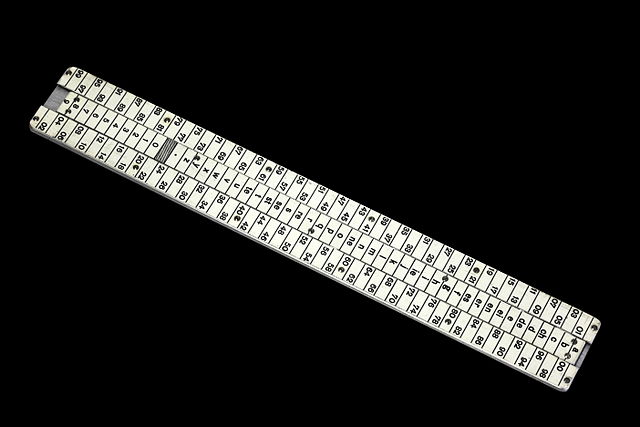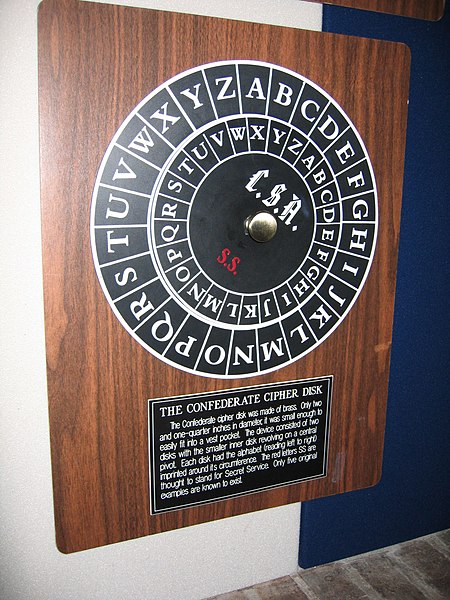The Vigenère cipher is a method of encrypting alphabetic text where each letter of the plaintext is encoded with a different Caesar cipher, whose increment is determined by the corresponding letter of another text, the key.
The Vigenère cipher is named after Blaise de Vigenère (pictured), although Giovan Battista Bellaso had invented it before Vigenère described his autokey cipher.
Cryptographic slide rule used as a calculation aid by the Swiss Army between 1914 and 1940.
Confederate cipher wheel, captured at the surrender of Mobile, Alabama, in May 1865 – National Cryptologic Museum
In cryptography, a Caesar cipher, also known as Caesar's cipher, the shift cipher, Caesar's code, or Caesar shift, is one of the simplest and most widely known encryption techniques. It is a type of substitution cipher in which each letter in the plaintext is replaced by a letter some fixed number of positions down the alphabet. For example, with a left shift of 3, D would be replaced by A, E would become B, and so on. The method is named after Julius Caesar, who used it in his private correspondence.
Caesar cipher translated to a disk has both outer and inner plates having alphabets in the same direction and not the reverse as seen in CipherDisk2000.




